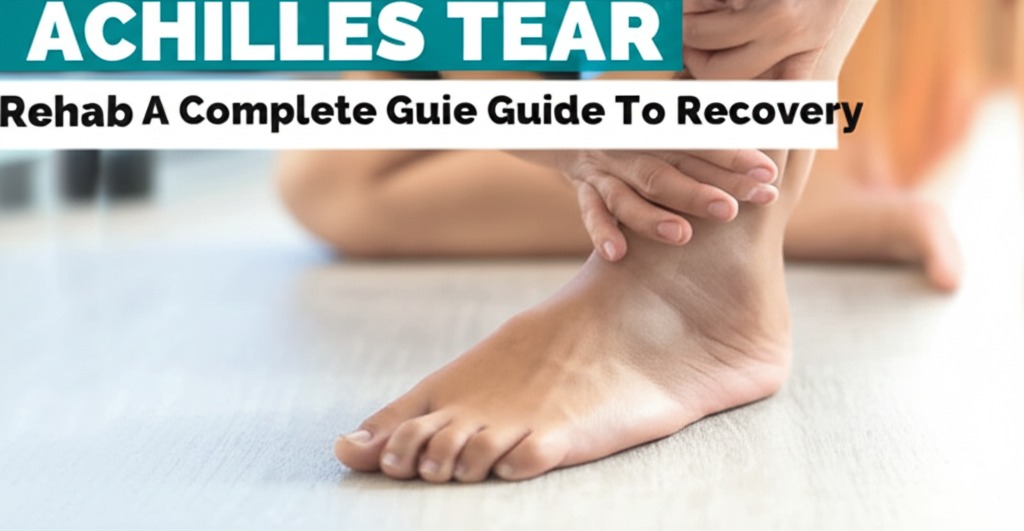Introduction
An Achilles tendon tear can be a devastating injury, affecting mobility and daily activities. Whether caused by sports, sudden movements, or degenerative conditions, proper rehabilitation is crucial for regaining strength and function. This guide will take you through the best practices for Achilles tear rehab, from immediate care to long-term recovery strategies.
Understanding an Achilles Tear
What Is an Achilles Tear?
The Achilles tendon connects the calf muscles to the heel bone and is essential for walking, running, and jumping. A tear can be partial or complete, with symptoms including:
- Sudden, sharp pain in the back of the ankle
- A snapping or popping sound
- Swelling and bruising
- Difficulty walking or standing on tiptoes
Common Causes of an Achilles Tear
- Sports injuries: Sudden accelerations, jumping, or pivoting
- Overuse: Repetitive strain from running or high-impact activities
- Aging: Tendon degeneration over time
- Medical conditions: Diabetes or certain medications (e.g., corticosteroids) can weaken the tendon
The Rehabilitation Process
Immediate Treatment: First Steps After Injury
R.I.C.E. Protocol (Rest, Ice, Compression, Elevation) should be applied immediately to reduce pain and swelling. Seeking medical evaluation is crucial to determine the severity of the tear.
Non-Surgical vs. Surgical Treatment Options
Depending on the severity, doctors may recommend either:
- Non-Surgical Treatment: Immobilization with a boot or cast, followed by physical therapy
- Surgical Repair: Stitching the torn tendon together, often recommended for active individuals
Phases of Achilles Tear Rehab
1. Early Recovery (Weeks 1-6)
- Immobilization & Protection: Use of a walking boot or cast to prevent strain
- Pain Management: Ice, anti-inflammatory medications, and elevation
- Gentle Mobility Exercises: Toe wiggles and light ankle movements (as advised by a doctor)
2. Strength & Mobility (Weeks 6-12)
- Weight-Bearing Exercises: Gradual transition from a boot to regular footwear
- Stretching & Range of Motion: Light calf stretches and resistance band exercises
- Balance Training: Gentle single-leg stands to improve stability
3. Advanced Strengthening (Months 3-6)
- Calf Raises: Starting with seated raises and progressing to standing variations
- Eccentric Strengthening: Slow, controlled lowering movements to rebuild tendon strength
- Low-Impact Cardio: Swimming, cycling, and elliptical training
4. Return to Full Activity (6+ Months)
- Sport-Specific Training: Gradual reintroduction of running, jumping, and agility drills
- Plyometrics: Controlled jump training to regain explosive power
- Ongoing Maintenance: Regular stretching, strength training, and monitoring for setbacks
Tips for a Successful Recovery
- Follow Medical Advice: Adhere to your doctor’s or physical therapist’s recommendations
- Be Patient: Rushing back too soon increases the risk of re-injury
- Maintain Proper Nutrition: A balanced diet rich in protein and vitamins helps tissue healing
- Listen to Your Body: Avoid activities that cause pain or excessive discomfort
Conclusion
Rehabbing from an Achilles tear requires time, dedication, and a structured approach. Whether you’re an athlete looking to get back in the game or simply want to regain daily mobility, following a progressive rehab plan is key. If you’re recovering from an Achilles injury, consult a healthcare professional to develop a personalized rehabilitation program. Stay consistent, stay patient, and you’ll be back on your feet stronger than ever!

Kallie Snyder is an author at Stonegate Health Rehab, providing valuable insights, recovery guidance, and rehab resources to help individuals achieve better health and well-being.
